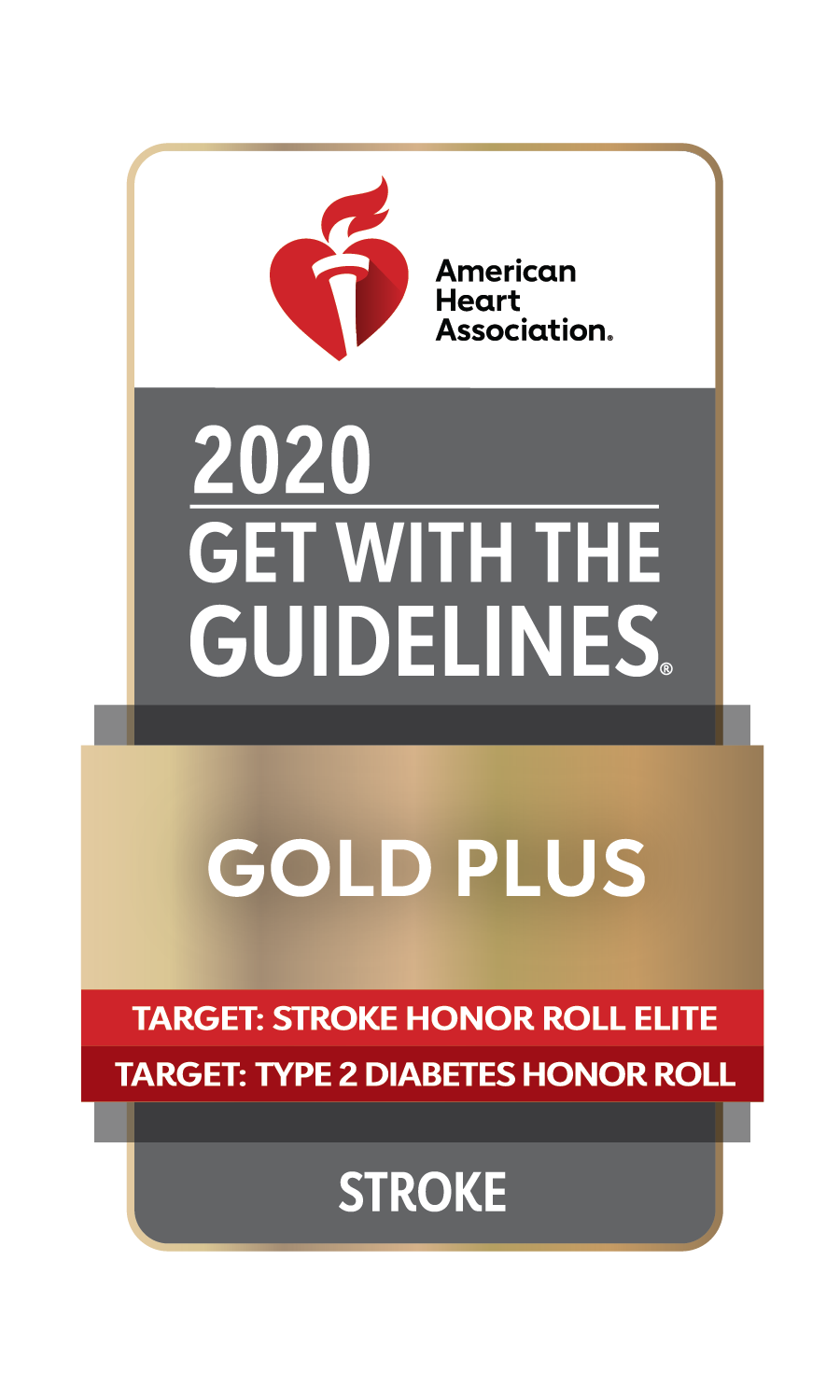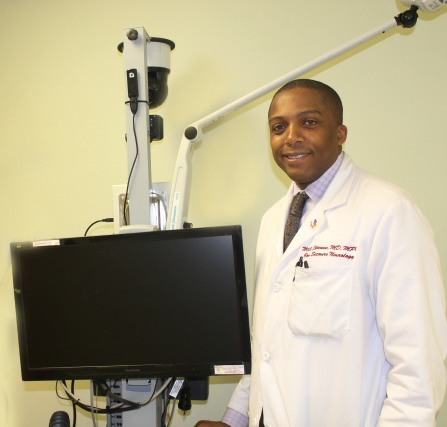Bon Secours Charity Health System offers a state-of-the-art neurology service located at Good Samaritan Hospital. Our neurology department is staffed by highly qualified experts in the diagnosis, treatment and management of neurological disorders under the leadership of Lyle J. Dennis, MD. At Bon Secours Charity our main goal is to help patients in need by providing the highest quality of care possible.

Acute care for the neurological patient is provided in Good Samaritan Hospital which is also a recognized certified Primary Stroke Center. We also provide care for a comprehensive array of nervous system disorders in our outpatient office suite located next to the hospital.
Good Samaritan is the only hospital in Rockland and Orange counties to have the Joint Commission Advanced Primary Stroke Center Certification. The Joint Commission’s gold seal is awarded to institutions that provide the most advanced stroke care to patients with exceptional, around-the-clock treatment. In order to receive this distinction, our Stroke Center underwent a rigorous onsite review during which Joint Commission experts evaluated compliance with stroke-related standards and requirements, including program management, the delivery of clinical care and performance improvement. It was determined that our Stroke Center thoroughly demonstrated the greatest level of commitment to the care of stroke patients and should be recognized as a leader in stroke treatment.
Since 2010, Good Samaritan Hospital has also been participating in the American Heart Association/American Stroke Association’s Get With The Guidelines program. In 2020, the Stroke Center received the Gold-Plus with Target: Stroke Honor Roll Elite for the third consecutive year. The program was also awarded the Target: Type 2 Diabetes Honor Roll Award.
Beyond providing complete care to those patients suffering from neurological disorders, the neurology department is constantly examining the newest and most current treatment of neurological disorders.
To schedule an appointment with one of our neurological physicians, please call 845.368.8808
http://www.bonsecoursneurology.com
Good Samaritan Hospital is responsible for diagnosing and treating a number of neurological conditions.
These include:
• Attention deficit disorder (ADD)
• Alzheimer's and dementia
• Seizures and epilepsy
• Headache and migraines
• Neuropathy and nerve disorders
• Parkinson's disease, tremors and movement disorders
• Stroke
• Dizziness and vertigo
• Balance and gait disorders
• Back pain and spine disorders
• Head injuries and concussion
• Multiple sclerosis and infections of the nervous system
• Brain tumors
• EMG and EEG testing
Good Samaritan Hospital also offers a Traumatic Brain Injury (TBI) Support Group that provides a positive environment for survivors of TBI to share their stories, learn coping skills and develop new friendships in a safe environment.
Neurology Services at Good Samaritan Hospital
Neurology
The Department of Neurology is comprised of multi-disciplinary teams of clinical experts that provide comprehensive neurological care for a wide range of neurological disorders affecting the brain, spine, nerves, and muscle. Conditions treated include neurologic emergencies, such as acute stroke or status epilepticus, to more chronic conditions such as headache/pain syndromes, epilepsy (seizures), neuromuscular (neuropathy, myasthenia gravis, muscular dystrophy), neuroimmunological (multiple sclerosis), as well as neurodegenerative (dementia) and movement disorders (Parkinson’s disease). All divisions are directed by highly qualified sub-specialists.
Concussion Program
The Bon Secours Concussion Management and Rehabilitation Program uses advanced technology, like ImPACT and the Sway Balance system, to provide an all-inclusive service to school systems, as well as club teams and other local sports organizations, who would like to make sure they comply with the rapidly developing federal guidelines on concussion as well as provide the best possible care to their athletes who suffer from concussion. Learn more.
Physical Therapy, Occupational Therapy and Speech Therapy
We offer a full array of Physical Therapy, Occupational Therapy, and Speech Therapy services. Occupational Therapists, Physical Therapists and Physical Therapy Assistants are trained to evaluate and treat conditions in order to maximize functional independence. Speech therapists are dedicated to making patients’ communication more effective by using advanced technologies and innovations. Speech therapy is often a critical component of post-stroke recovery.
Inpatient Rehabilitation
Acute rehabilitation is an inpatient setting for patients who require intensive, multidisciplinary interventions to address impairments arising from debilitation or acute illness or injury. The Physical Medicine & Rehabilitation unit (PM&R) is most appropriate for patients with complex rehabilitation needs and who require close medical supervision to maximize their recovery.
Outpatient Pediatric Neurosurgery
Outpatient pediatric neurosurgery services are available here with access to the Pediatric Neurosurgery Service located exclusively at the Maria Fareri Children’s Hospital, an advanced free standing, dedicated children’s hospital and Level 1 Pediatric Trauma Center. Maria Fareri provides care for the full spectrum of pediatric neurosurgical disorders. Learn more.
Inpatient EEG Monitoring Program

Only Program of Its Kind In Rockland and Orange Counties into Provide Patients Access to Life-saving Neurological Analysis
We have recently expanded and enhanced our EEG laboratory with a comprehensive Inpatient EEG Monitoring Program. It will provide residents of Rockland, and Orange with unmatched neurological assessment, diagnosis and therapy, right in the communities where they live.
Uncontrolled epilepsy affects more than 1.2 million Americans, often requiring several treatment attempts and examinations to be able to identify their actual neurological condition. Some patients experience seizure-like episodes but need to determine if they have epilepsy or if something else is causing their symptoms. Other patients have non-epileptic seizures that stem from heart or blood-vessel disease, or from emotional stress. These conditions all have their own specific therapy recommendations, so it is very important to get the diagnosis correct. The continuous, inpatient EEG data the Good Samaritan Hospital program provides, streamlines this process by revealing the full picture of a patient’s brain activity.
“It is very complicated to get an accurate diagnosis of a neurological episode, but the best way to capture and understand the event is through an inpatient EEG. Seizures can be subtle and non-convulsive, so being able to directly monitor the patient in-person is imperative. We can make real-time medical observations and adjustments which lead to more precise diagnoses and treatments,” said Mill Etienne, M.D., Director of the Epilepsy and EEG Laboratory at Good Samaritan Hospital. “This monitoring is often the first step towards a patient becoming free of disabling seizures which can lead to significant improvement in their quality of life.” Dr. Etienne is an expert in EEG monitoring and is board-certified in Brain Injury Medicine, Clinical Neurophysiology, Epilepsy and Neurology.
An electroencephalogram (EEG) is a safe and painless test that measures and records the electrical activity of the brain by using sensors (electrodes) attached to the head and connected by wires to a computer. Good Samaritan Hospital’s new Inpatient EEG Monitoring Program has several advantages over an ambulatory EEG exam.
The continuous in-hospital monitoring allows for analysis of both the clinical and electrographic features in real-time. Physicians and nurses who are trained specifically in EEG monitoring may detect seizure activity on the screen or notice a change in a patient’s behavior in the room and they can intervene immediately. They can also maintain accurate monitoring placements as the electrodes often shift in a patient’s sleep. This can be very important for characterizing impaired awareness and identifying subtle differences between conditions that could go unexplained using only at-home EEG monitoring.
The Good Samaritan Hospital Inpatient EEG program is now accepting new patients, for more information or to make an appointment, please contact 845.368.8808.
Our neurology service office is open from 10 a.m. - 4 p.m. M-F.
To make an appointment, call 845.368.8808
Hear from Our Patients

Aleyamma Menon
Brain Injuries Do Not Have to Be Fatal
Daniel Dagnone
A Return to Normal
An innovative implant technique offers relief for a young man with epilepsy.
By Lisa Arcella
Christmas Eve usually brings blissful dreams of abundant gifts under the tree, but for Warwick resident Daniel Dagnone, the night before Christmas in 2013 was a nightmare.
While visiting his mother and stepfather over the holidays, Dagnone, now 24, decided to take a nap. “When I woke up, I was in just crazy pain,” he recalls. “I was never in that much pain before. I had somehow dislocated my shoulder, but I hadn’t fallen out of bed. It just happened.”
Dagnone was rushed to the ER and given a battery of tests. Unable to find an immediate health threat, the doctors sent him home, telling him he probably just had joint issues and had slept on his shoulder in an awkward position.
The fact is, Dagnone had experienced an epileptic seizure. After several subsequent trips to the ER, he was referred to a neurologist. Eventually, he was diagnosed with epilepsy, a disorder in which neurons in the brain misfire, leading to seizures. With no family history or risk factors for the disease, the diagnosis came as a surprise.
“Epilepsy and seizures affect 3,000,000 Americans of all ages,” explains Mill Etienne, MD, MPH, Director of the Epilepsy and EEG Laboratory at Good Samaritan Regional Medical Center, a Member of the Westchester Medical Center Health Network (WMCHealth). “So, it’s actually a pretty common disorder, but because the seizures may not be witnessed, there is often a delay in making the diagnosis.”
The cause of epilepsy remains unclear, although a history that includes severe traumatic brain injury, stroke, brain tumor or meningitis presents risk factors. Daniel, however, had experienced none of these.
Eventually, Dagnone was taking up to 4000 mg of anti-seizure medication daily, to try and control his symptoms. “Going to sleep at night was just the worst,” he says. One early morning before work, still groggy, he pushed open the bathroom door, only to regain consciousness on the floor, with a bloody face and a broken clavicle. This turning point prompted him to consult Dr. Etienne, to discuss surgical options.
Dr. Etienne says that surgery isn’t an option for all patients. “If the seizures are happening in a part of the brain that is important functionally — like your speech center, for example – you cannot operate on that portion, because of the importance of that function. Some patients have seizures starting in the entire brain, all at once – those patients are not candidates for surgery either.”
While brain surgery was not possible for Dagnone, another treatment offered hope: the implantation of a Vagus Nerve Stimulator, a device with the remarkable ability to sense and help prevent a seizure just before it happens (see sidebar).
According to Dr. Etienne, “Once I identify an appropriate candidate for this surgery, Dr. Mark Tobias, an experienced neurosurgeon from Westchester Medical Center, performs this procedure. This partnership offers our patients better outcomes.”
A key advantage of the implant is that it typically enables the patient to lower the doses of medicine they require. “Getting this implant was part of my decision to take less medication,” Dagnone says. “I’m sure it’s not good to take this much medication the rest of your life.”
With this new implant in place, Dagnone envisions a future in which epilepsy no longer dominates his life. “Everything over these past two years has been about epilepsy. I want ‘normal,” he explains. “I’m happy this implant was an option. I’m very grateful.”
The Technology
Vagus nerve stimulation is an increasingly common technique used to treat epilepsy, according to Dr. Etienne. The device is similar to a pacemaker and is implanted inside the body, where it sends pulses of electricity to the brain.
“It’s an option for those who can’t have brain surgery and are not responding well to medication,” he says. “The device is placed on the chest wall, over the heart, and a wire is run from the stimulator to the vagus nerve, located in the neck. Most patients go home the same day after surgery is completed.”
The machine can detect the sudden increases in heart rate that typically occur before a seizure, quickly sending an electrical impulse to the brain, to “interrupt” the seizure before it has a chance to occur.
Aimee Rubin
Hear From A Former Patient and Founder of The Good Samaritan Hospital Traumatic Brain Injury Support Group